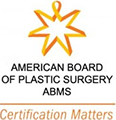More Men Taking Advantage of What Plastic Surgery Has to Offer
October 13, 2014
anti-aging procedures, Atlanta facial rejuvenation, Atlanta liposuction, Atlanta plastic surgeon, Atlanta plastic surgery, Cumming cosmetic surgery, Cumming plastic surgeon
One of the most exciting recent developments in plastic surgery has been the degree to which men have begun to embrace the possibilities of cosmetic plastic surgery procedures. Since 2000, the number of plastic surgery procedures performed on men in the United States has increased by over 20%, according to the American Society of Plastic Surgeons (ASPS). As the social stigma attached to male plastic surgery diminishes, men are coming to more readily opt to take advantage of what these procedures have to offer.
The majority of this increase in popularity is due to the increased use of non-invasive facial rejuvenation procedures. Botox® Cosmetic injectable treatments, for example, can help alleviate many of the signs of facial aging, particularly the lines that develop between and above the brows and the crow’s feet that can accumulate at the edges of the eyes, by relaxing the facial muscles that cause wrinkling in the first place. On the other hand, facial fillers like Juvéderm® and Restylane®, help restore the volume and youthful “plumpness” that gradually diminishes in the tissues of the face over the years. Together, these quick and easy maintenance procedures can effectively counteract the damage caused by time and environmental factors, keeping your skin and face looking younger, longer.
However, the fascination with maintenance procedures doesn’t end with the non-invasive. Over the past several years, men have been increasingly drawn to a number of surgical procedures designed to relieve tiny pockets of excess fat and tissue in areas that are either genetic or notoriously difficult to exercise. Specifically, blepharoplasty (eyelid surgery) and liposuction remain two of the top five most popular cosmetic procedures among men, and both are excellent ways to make those minor, subtle changes that can make a significant difference in the overall appearance.
If you have any questions about any of the treatments that I offer, please contact us today to schedule a consultation. Additionally, Atlanta Plastic Surgery, P.C. provides a variety of options for financing, including Care Credit®, to assist you. Don’t forget to connect with me, Dr. Hunter Moyer, on Facebook, Twitter, and Google+ for the latest plastic surgery news.









